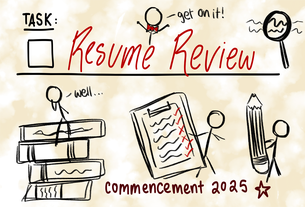{shortcode-e1d9f664d4495c59118cbda794ad94069febd7d5}
Early on a chilly Saturday morning in April 2013, a group of Harvard’s most elite donors gathered in the Business School’s Spangler Center. After breakfast in Spangler’s sunlit Williams Room, the attendees were treated to a day of Harvard celebrity: an hour of conversation with University President Drew G. Faust, a panel moderated by Provost Alan M. Garber ’76, and discussions throughout the day with some of the University’s most celebrated professors.
The annual symposium of the Committee on University Resources—or COUR, as it is known by its members—is an invitation-only event, and only the University’s most valued donors are on the list. COUR, like the alumni council of advisors convened by Faculty of Arts and Sciences Dean Michael D. Smith or other alumni visiting committees at various schools, is both a reward for past support and an engagement tool meant to bring top alumni to campus and into conversation with the University’s top leadership.
Taken together, the committees form a crucial part of the powerful fundraising machine built by Harvard’s Office of Alumni Affairs and Development, which is operating at full horsepower during the University’s ongoing capital campaign. But while COUR and other committees like it unite hundreds of well-heeled donors, for most Harvard supporters life after graduation does not begin on a top committee with the ear of Smith, Garber, or Faust.
There are many different types of donors and many different paths to giving, and the Development Office’s robust fundraising network aims to cull them all. For many supporters, the process runs through events, reunions, and other gatherings planned by University staff and eventually culminates in a gift of $10,000 or less each year.
But for those who give more—often much more—the relationship is far more intimate, with access and attention ratcheted up. When big gifts are on the table, Harvard’s Development Office antes up, making available top professors and leadership and giving big donors a chance to craft just how their money is spent.
BEHIND THE CURTAIN
With an ambitious University-wide capital campaign in full swing, one of Harvard’s most important arms is in a fairly nondescript office building at 124 Mt. Auburn Street. Inside, staffers at Alumni Affairs and Development operate the behind-the-scenes machinery of Harvard’s famed fundraising apparatus. University Vice President Tamara E. Rogers ’74 runs the show from two offices: one inside the Development Office and another with the central administration in Massachusetts Hall.
{shortcode-a836d83f63188eeb213435ca52c0930d9dcaa31f}
“Our alumni don’t owe us philanthropy,” Rogers explains late on a Monday afternoon this May, outlining the overarching mission of her office. “What we want to do is to make them feel as though, given that they’re philanthropic, that Harvard is a place where they would want to be philanthropic.”
But before Rogers and her staff make the pitch to potential supporters, officers at Alumni Affairs and Development work with a robust in-house research team to study Harvard alumni—and even some potential targets with no affiliation to Harvard—who might be interested in donating, as well as trends in finance and philanthropy.
The research usually amounts to an extensive collection of publicly available information, Rogers says, ranging from the academic field of the relevant graduate to other philanthropy the target might be involved in, to corporate board postings, and much more. A particular focus of the research team is previous work with nonprofits and giving to higher education.
“There is an astonishing amount, of course, that one can learn from public sources about potential interests of prospective donors, be they alumni or non-alumni,” Rogers says. She adds that her best source of information is often the groups of volunteers her office organizes around the world. After volunteers interact with potential targets, Rogers says, they often report back to the central fundraising office on the target’s overall interest and any specific programs that might seem attractive.
“People, when they come together to talk about fundraising [might say], ‘I think you might approach this person for this and that person for that,’” she explains. “[Volunteers] may know more than we do.”


